Comparison review republished by the author; originally published in Motor Trend’s 1990 Sports Cars of the World
They don’t make rock ‘n’ roll like they used to. My almost-a-teenager daughter disagrees with me, of course, because that’s her job.
What does she know? The Sixtiess were the golden years of rock, just as they were the best years for sports cars and affordable sports cars: MG and Triumph, Alfa and Fiat, Datsun and Porsche. And Lotus. They don’t build ‘em like that anymore. With the exception of the Alfa, the survivors have gone way upscale.
Along comes the Mazda Miata. It looks like what they used to make; it has two seats and a fabric top. The sounds are the same, the feel is the same: the way it snarls through a winding stretch of road, snapping around sharp corners, sweeping through the bends, barking on the up shifts and burbling on the overrun, the wind in your hair, the sun in your eyes and the smell of hay and wildflowers right there in the cockpit with you.
How do you say gestalt and Japanese? Well, it Mazda, it’s kan sei, which, they tell us is engineering for feel, and more directly, how it makes you feel: affect as much as effect. If driving the Miata evokes the sports cars of the Sixties, so much the better. It’s exactly what Mazda had in mind. One of the development bogeys, we’re told, was the Lotus Elan, and as part of the development process Mazda bought a Elan, drove it and took it apart see where the golden eggs came from.
That made us curious as to how well and how closely, if at all, the Miata duplicated the Elan. One of the best sports cars of the decade, the Elan had supple, fully-independent suspension and a double overhead cam engine at a time when many of its competitors had cart-sprung live axles and engines with pushrods. The Elan was the better car then, but how good is it now? Particularly, how does it stack up against this pretender from the Orient?
To find out, we put a ’90 Mazda Miata up against a ‘67 Lotus Elann Series 3 belonging to Tony Campetelli of Oley, Pennsylvania. The Miata does, and doesn’t, looked like the Elan. Both, of course are two-seat sports cars with rounded contours, retractable headlights and a simple oval-ish radiator opening sans grill work. If you hadn’t seen either for a while, you might even be forgiven mistaking one for another on first glance.
Side-by-side, however, the similarities are overwhelmed by differences. Whereas the Miata looks bumperless– both front and rear bumpers of lightweight blow-molded plastic reinforcements hide under flexible body-colored plastic caps – the Elan’s bumper are polyurethane-filled fiberglass shells, looking more and acting less like bumpers than the Mazda’s. Viewed head-on, the Lotus has a rather blank expression on its face – stiff upper lip and all that – while the Miata’s grille has a distinctive smile about it, much the same as the old bug-eye Sprite. It’s a happy little car! Yet its parking lights (are we allowed to say this?) Makes it look distinctively Oriental.
In terms of styling Lotus definitely did a better job on the retracting headlights. Early models raise their headlights by engine vacuum and just when you needed them most, while passing or climbing a hill, they could drop back into the hood. On post-‘ 69 models that headlights were held closed by engine vacuum, and although this meant that cars with leaking systems greeted their owners with open eyes, at least they weren’t safety hazards. Ron Hickman, designer of the Elan, reportedly decided against motorized retractors because he knew about English electrics.
The Japanese electrics won’t let you down, or perhaps leave you down, but the headlights in their raised position are a particularly jarring feature of the Miata’s styling, not to mention what these illuminated air brakes do to aerodynamics. Surely there is a more elegant solution. Perhaps something like the old Opel GT or the current Corvette.
The Elan Is the smaller of the pair. Front and rear tracks are more than seven inches narrower on the Elan than the Miata, and the Mazda comes in at Rebenesque 10 inches wider but is only 3 inches taller. More importantly, the Elan weighs in at a petite 1500 pounds curb weight, which makes the Mazda, light by today’s standards at 2182 pounds, seem absolutely porky.
Of course, there’s not too much to the Elan, just upper and lower fiberglass body halves with doors hung on the sides, the whole of which is set over a backbone frame like a plastic model being assembled. In fact, the Loutus’ frame, a rigid central girder of 16- and 18-guage welded sheet metal forked at either end to accept the front and rear suspension and engine mounts, bears some resemblance to the Miata’s aluminum “Power Plant Frame,” bridgework that links the engine and transmission with the final-drive unit. Although Mazda says that’s there to enhance throttle response by eliminating unwanted drivetrain motions, it makes the gearshift bob up and down disconcerting in on-and-off power situations.
The Miata’s chassis is a relatively conventional unit body, though very rigid, having been designed as a convertible from the outset, with computer analysis of 8900 chassis nodes. A large central tunnel and deep-sectioned side sills contribute to chassis stiffness.
Both the Elan and the Miata have fully independent suspension, although Lotus used struts at the rear while Mazda has double A-arms at all corners, mounted to sub-frames bolted to the body shell. The Elan, in traditional Chapman-think, has no sway bars. The Miata has them front and rear. Both cars have four-wheel disc brakes and rack and pinion steering (although Mazda adds power-assist on the former with power optional on the latter).
Both the Elan and the Mazda have 1.6-liter four-cylinder double overhead cam engines with the cast-iron block and an aluminum head, though the Mazda has four valves instead of two per cylinder and multi-port electronic fuel injection rather than the twin two-throat Webers on the side of Lotus’ Ford-based engine. Time tells: The Mazda engine out-produces the Lotus, 116 net to 105 gross horsepower (though the SE version was rated at 115 and race mods could bump it to 145 with definite concessions to civility). What’s more, despite a 9.4:1 compression ratio, the Mazda runs on unleaded regular. With electronic ignition you can be sure that the Mazda will be easier to live with than the Lotus, whose distributor, run off the vestigial camshaft from the original pushrod version of the engine, is hidden under the carburetors and approaches the MGA Twin Cam in the fun-to-tune category.
The Miata has a five-speed manual; the Lotus has a close-ratio four-speed box, the. Mazda anticipated more highway cruising than Lotus, and the final-drive ratio vs. higher (in overdrive fifth) at 3.50:1. First year is lower on the Mazda as well, giving a wider spread to the gearbox.
Mazda wins the battle of the convertible tops hands down. Unzip the plastic rear window, unlock two latches at the top of the windshield and flip the top back. It can be done at a stoplight from the driver’s seat, and comes back up almost as easily. With the Elan, though, you have to remove the fabric from the framework, lower the framework and then fold the top – it’s attached at the rear edge – with the precision of a parachute packer, and then pull the boot up (it’s also attached to the car) and snap it in place. The Mazda has a boot, but it requires getting out of the car to install it, and bets are that most of them will stay in the trunk. The boot also billows annoyingly when fitted (easily fixed with the strip of Velcro and while were picking nits, we wish Mazda would have used glass for the rear window. Maybe it’s more authentic to ponder a foggy plastic rear window, but then Mazda didn’t design in the traditional oil leaks, did it?
The Lotus loses points with the side window frames that are there whether the windows are up or down. At least the Series 3 Elan has electric window lifts. Earlier versions had pull-up/pull-down windows without the frames. Hand cranks weren’t used because there wasn’t room. Our test Miata had the optional electric windows, part of option package B, but Mazda strangely decided to place the buttons on the console between the seats. We didn’t drive the Lotus at night, so we can’t report on its interior illumination. The Mazda, however, has puny lamps under the dashboard that, if it were up to us, would carry at least a few more watts.
The Miata is easier to enter, but the doors of the Lotus don’t open very wide (only about 30 degrees) and make it difficult to slide your legs in under the steering wheel. Close the door and the Lotus fits you like laced-up sneakers. The seat is the on-the-floor type, like Jim Clark’s 49, we suppose, though that doesn’t help entry or exit all that much. The Mazda, wider on the outside, has more room inside as well. Your left shoulder won’t touch the door unless your nickname is “Refrigerator” or you do the Gangster Lean, which only really works in older Cadillacs.
Both dashboards work well and have all the instruments you really need, but nothing extra. It’s obvious that Mazda had more of a budget to play with. Lotus relied on a flat wooden surface with Smith’s gauges and knobs and switches from hell. (The heater knob has a graphic of a barbecue pit on it).
The wood-rimmed steering wheel looks right at home in the Elan, but it’s skinny, hard and slippery unless you’re wearing your driving gloves. Mazda’s black (optional) leather-wrapped circle with the Nader balloon in the middle (the airbag was the only alternative to some hokey path of belt system) isn’t distinctive but works well. Still, go figure this: the Mazda’s gearbox is better in precision and feel. The Lotus is a stretch, and the pattern takes some getting used to. The Miata’s shorter lever even has a silkier click.
Blame the Elan’s transmission on being a proprietary bit, but you can’t say the same about the pedals. The brake and throttle are so misaligned that you can heel and toe only if you shop at the same shoe stores Kermit the Frog. To make matters worse, the brake pedal feels like the clutch and… My but it’s strange down there. The Mazda wins this one, too, with well-spaced petals with good feel and, ready for this, the throttle pedal is drilled.
Mazda will tell you how much time was spent on the sound of the exhaust, evaluating something like 25 different systems before settling on the Miata’s production pipe. It’s from stainless steel, too, so folks won’t be ruining that sporty note with something from Mufflers Backwards-R-Us. In fact, it sounds a lot like Lotus only, gulp, better. The Elan, with a stock system, is almost over muffled, and it doesn’t bark between shifts the way the Mazda does. Put up the top, however, and you won’t hear the exhaust note of either.
Thanks to its IRS, the Elan turns rough pavement into velvet, well, with only a few ripples in it. Don’t worry about a bump pointing you in a new direction, though. It goes where you point, without corrections. The only shortcoming on Campitelli’s Elan is the skinny-feeling Pirelli P4 155×13 econotires. They’re the only tires available now that will fit between the stock fenders and the suspension. We didn’t skid pad the cars, but the Mazda would doubtlessly g-force the Lotus’ fiberglass doors off. On the Bridgestone SF-325 P185/60R14 tires, not the world’s stickiest gumballs, the Mazda digs in like the Marines and makes oversteer/understeer almost academic on the street. In fact, on really tight, winding roads with lots of elevation changes, the Mazda will outrun a lot of heavy iron with better numbers.
Despite their differences, on the road it’s remarkable how well matched the Mazda and Elan are. Trading cars on a nine-tenths pas de deux on winding country roads proved them to be almost equal; neither was able to press an advantage, or seemed to have one. A contemporary test driver of the Elan said, “We’ve never driven a car that is more sheer fun to drive,” and it’s that word fun – along with the word smile, happy and really neat – that keeps coming up in today’s discussion about the Miata. On the concert hall of the open road, these two rockers are playing off the same sheet music. If there are winners here, it has to be said that the Miata is a better automobile than the Elan. Temper such heresy though, with the realization of 25 years of technology; it had better be. The Elan was the class of its class, the golden child of the golden era. Putting it simply, they do build ’em better now.
For me, just give me some of that old-fashioned rock ‘n’ roll. That kind of music just thrills my soul. Like the exhaust note of an Elan. Or Miata.
Motor Trend added a comparison spec sheet with performance and price data. The 1967 Lotus Elan was priced at $3,992 in 1967 while the 1990 Mazda Miata had a base price of $13,800 and price-as-tested of S16,384.
The Elan was tested for 0-60 mph in 8.5 seconds, the Miata at 8.86 seconds. The Miata was quicker through the quarter mile however, at 16.78 seconds versus 16.9. That’s well within the margin of error, and shows just how close Mazda came to matching the Lotus, I’d call it a direct hit.














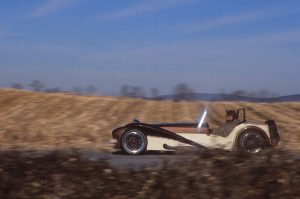
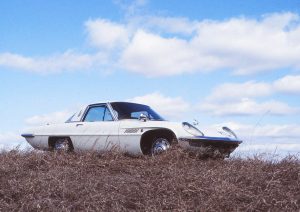
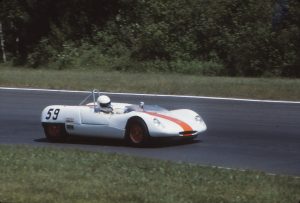
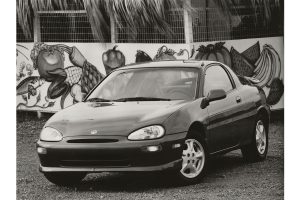

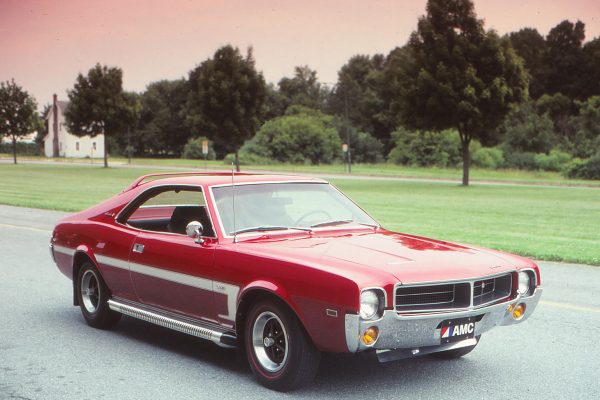
What Do You Think?
You must be logged in to post a comment.